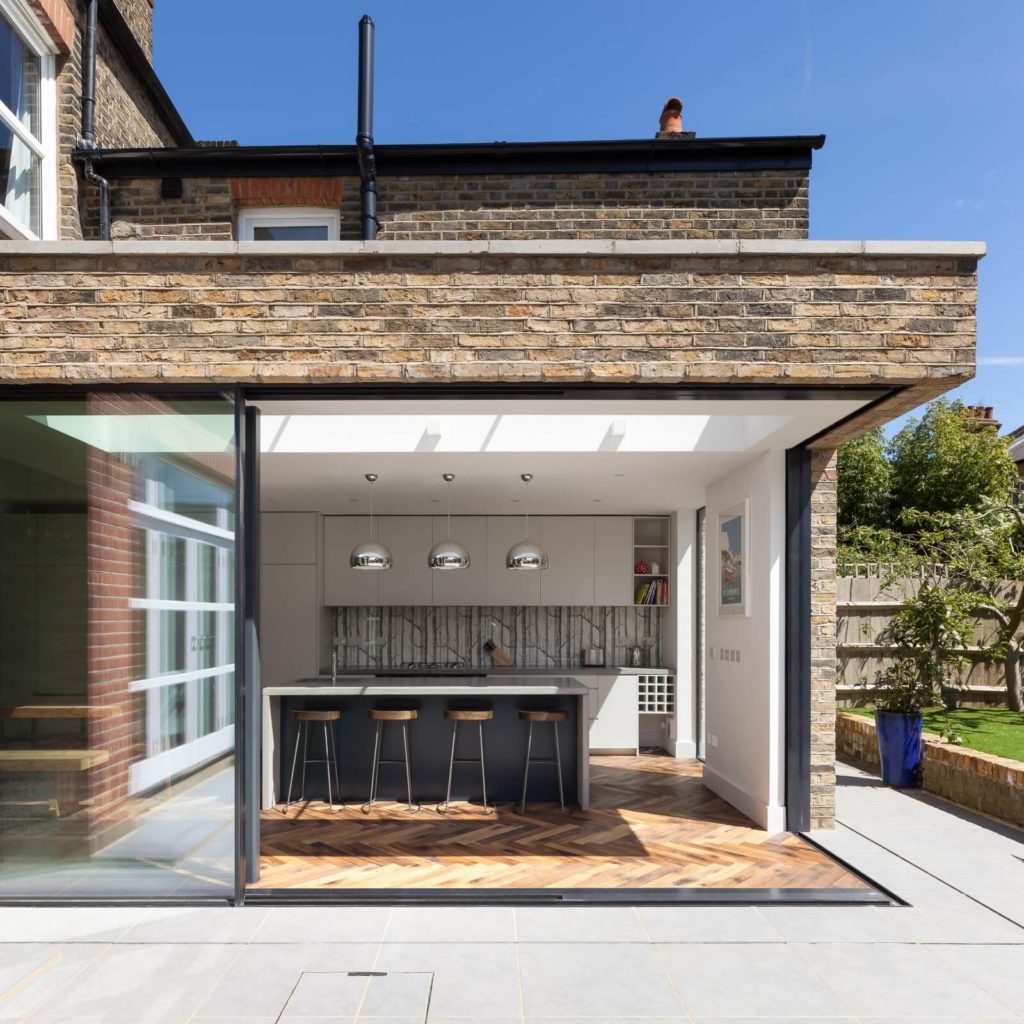Not only do lightweight glazed extensions add a striking design statement to any house but they will dramatically increase the amount of natural light in a space and, with any luck, lift the overall value of the property. Here we talk to architect Jake Low, partner at the award-winning London-based architectural practice JaK Studio, to ask for his advice and expertise when it comes to their design.
1 – Why are glazed extensions so popular right now?
If we go back 20 to 25 years, when I was first starting out as an architect, there were very few people designing frameless glazed extensions in the residential sector. Those that existed were one-off, design-led architectural statements that were inspired by what the likes of [Richard] Rogers and [Norman] Foster were designing in commercial buildings. Then, we started to see more and more glass used in galleries and museums before this trend started to spill into high-end residential design.
There are several reasons why more and more people are embarking on these designs today. Firstly, there are more manufacturers with the capacity and capability to design glazed extensions, and secondly, there is a huge appetite for having more natural light in the home.
But perhaps the most significant change is the improvement in the thermal capacity of glazing. Whereas years ago, highly glazed rooms tended to be cold in the winter, now they can be designed to a much higher thermal performance, meaning these are rooms that can be enjoyed all year round.

2 – How easy is it to secure planning permission?
This is where we’ve noticed a significant change in attitude. At the beginning of the 2000s, when it came to listed buildings, houses in conservation areas, or some form of heritage building, planners would often want any addition to be in keeping with what’s described as the “host” building.
In the last few years, however, there has been a noticeable leaning towards extensions being subservient to the host building. While it’s not true for every planning department, we’re seeing a strong movement away from pastiche extensions. This is why light-weight glass additions—which strike a clear distinction between the existing architecture and modern glass extension—are almost encouraged in buildings that have some historic significance.

3 – Do you need an architect to design a glazed extension and, if so, why?
The short answer is that if the project requires planning permission [if it doesn’t fall within Permitted Development] then you’ll most likely need an architect. We will help work on the size, scale and mass of the glazed extension and it is these drawings that are then used by the specialist glazing manufacturer or contractor such as Minima Sliding who will focus on the details. Specialists will be required if the structure is made entirely of glass including glass load-bearing beams and columns.
4 – At what point might you need a structural engineer?
A structural engineer is needed to design both the foundations of the new space and how it interfaces with the existing house.
5 – Is a glazed extension likely to be more expensive than a conservatory and why?
If you work it up in levels, the least expensive option would start with a uPVC conservatory. Next, would be something that has an aluminium frame. Anything with hardwood timber frames or specialist frameless glass is likely to be the most expensive because both are bespoke, design-led solutions that require technical skill to make.

6 – What measurements are needed to increase insulation in the home with a glass extension?
As a studio, we take the Passivhaus approach, that is to first look at the existing fabric of the house and how to improve the insulation before making any additional interventions. Glazed extensions historically were not energy efficient although the thermal properties of glass are improving all the time. Having said that, more heat tends to be lost through glass than a solid construction even today.
If possible, we would recommend considering the orientation of the extension bearing in mind that anything facing due south can run the risk of overheating so it’s important to consider ways to mitigate that through double or triple glazing or encouraging cross ventilation [Minima Sliding now manufactures triple glazed doors]. Conversely, underfloor heating could be a might idea in a north-facing extension or one that is shaded by tall trees.
Bear in mind that there will be targets to meet for building regulations when it comes to u-values with any extension. However, these are aggregate scores so while the glazed box extension might not meet the standard, it’s possible to do a trade-off by improving the u-value or by carrying out other energy-saving measures elsewhere in the house.
7 – What about the design of the doors and windows?
If you’re going for a glass extension, it follows that you want as much visibility as possible. After all, these spaces are all about enjoying the views and making a constant connection with nature. The expanses of glass are most likely to sit in some kind of frame and we recommend going with the thinnest profile as possible to make the most of the views. Minimal sightline sliding doors are ideal as they dissolve the boundary between the inside and outside.

About Jak Studio: JaK Studio is an award-winning RIBA chartered practice of architects and designers based in London and Sarajevo. Alongside residential projects across the UK, their work includes designing a mobile recording studio for the BBC, contemporary beach huts and innovative home office cabins (020 8746 0088; jakstudio.co.uk)
Related read: What are the benefits of extra-large sliding doors?
Thinking about building a glazed extension? Minimal sightline sliding doors will be a perfect match. Give us a call to find out more about Minima’s sliding doors.